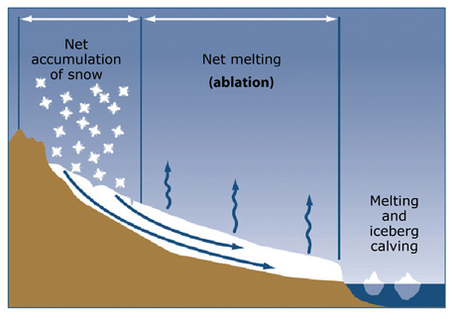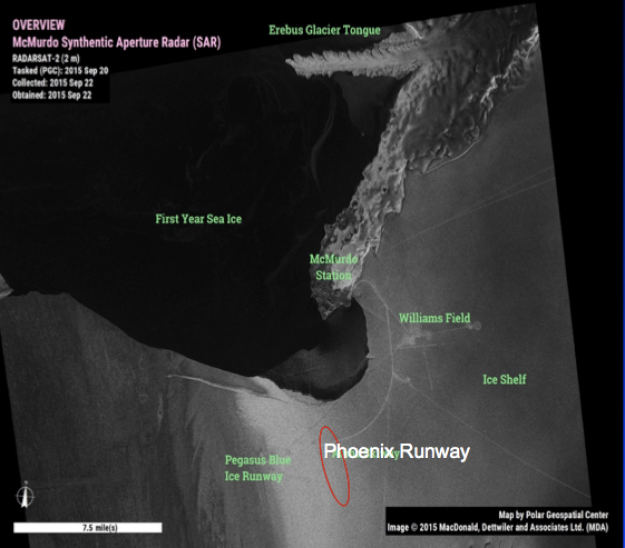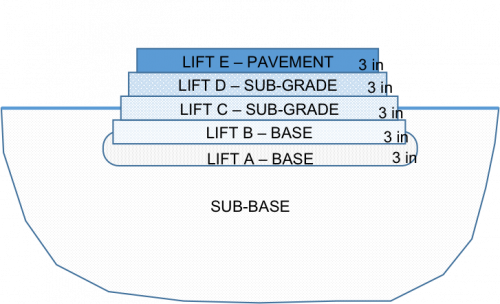The runways at McMurdo Station in Antarctica are vital to mission of the NSF and USAP(abbreviation) United States Antarctic Program – without them, the program just wouldn't work. Getting personnel and equipment (not only for the U.S. but also for New Zealand and Italy, as well as various other countries periodically) would not be as easily possible without the airfields and the hard work of the U.S. Air Force and Reserves. In the November 4th blog post, I discussed the development and challenges of the various runways that support the operations down in the far South. Today, November 15th, marks the first time that a aircraft landed at the new Phoenix airfield. A C-17 aircraft flew into Pegasus airfield and after disgorging its passengers, took off again and landed safely a few miles away at Phoenix. But how did we get to this point? In the November 4th blog post, the Pegasus airfield had been completed and all was good – so what happened? How did we get here?
Problems at Pegasus
The biggest problem with Pegasus was the ice that it was built on – it was moving. While I was working in the shear zone, my camp was moving, albeit slowly but moving nonetheless, down to the Ross Sea and McMurdo Sound. Remember that although it looks permanent, an ice shelf is an extension of the ice sheets and glaciers behind it and are floating on the ocean. As they move farther 

If the McMurdo Ice Shelf was moving, then so too was Pegasus Airfield (it was after all on the ice shelf). As the above image shows, the airfield was slowly moving out of the Accumulation Zone and into the Ablation Zone. Operations on the airfield naturally blow snow away and eventually, the ice is exposed. The need for snow is important – snow reflects light back up and helps to keep the temperatures low.
Site Alpha
Finding another site for a runway was no easy task. You couldn't just move the runway back to where it originally was since conditions had changed both above, on, and below the ice. To make matters even more challenging there were no locations near Pegasus that had the same qualities as the original location. It was time to try something different – really different. The selection of Site Alpha was led by the considerations of snow (the area has an average snow accumulation of 18 inches), flight paths for aircraft fit between Black and White Islands (two topographic features that greatly influence the wind in the area), and outside of an area of dirt that was being blown in from Black Island. Only problem? The ice was deep down, like really far down, deep enough that excavating down to the ice was not an option.

Making Ice Isn't Easy
So if you can't get to the ice, then the CRREL (Cold Region Research and Engineering Laboratory) decided, let's make the ice. Making ice isn't actually as easy as you might think given that we are used to getting ice cubes on demand from our refrigerators. Glacial ice is made through the slow compaction of snow into ice crystals – a process that can take hundreds of years – and McMurdo did not have hundreds of years to wait. It was decided to "make" ice through manual compaction of the snow over time. This had really never been done before (the Russian's had tried it) but we had experience putting really heavy things on snow before since the engineers at CRREL had designed the foundation for the 10m-telescope located on the snow at Amundsen-Scott South Pole Station, and they had also designed the aircraft parking area (or apron) on deep snow at Pegasus.

The creation of the pavement for the runway would be done in stages or "lifts" – new snow would be plowed up onto the runway base and then compacted in stages. Each lift would be subjected to compaction slowly increasing from 40,000 lbs up to 160,000 lbs (the last being more than the weight of a C-17). They were learning the process by doing the process and altering their methods as they were gong along – remember this hasn't been done before.
Touchdown



Comments